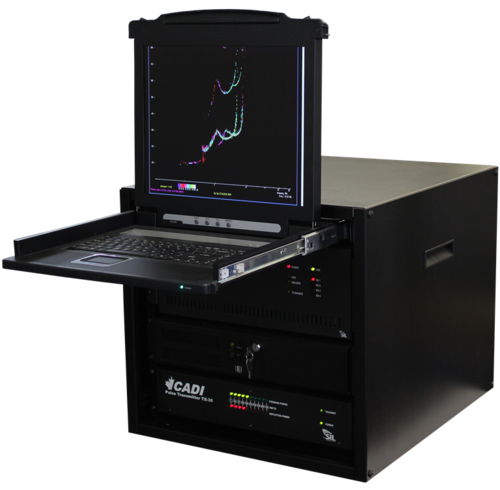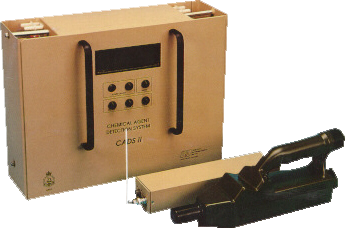IndustriesMilitary & Defence
tANGIBLE dEFENCE sOLUTIONS.
The RMD Group of Companies currently provides a variety of innovative products to the Defence Sector. RMD Engineering is registered with the Controlled Goods Program (CGP), a Canadian Federal Government Program administered by the Department of Public Works and Government Services Canada. The CGP is a stringent security program that controls the examination, possession, and transfer of certain controlled goods.
All of the RMD team members who work in in our controlled goods section maintain the requisite security clearance and training. Contact us to confidentially discuss your Controlled Good query.
+ 01CADI

The Canadian Advanced Digital Ionosonde (CADI) is a low cost, state of the art, flexible, full featured ionosonde ideal for both routine ionospheric monitoring and research. CADI provides sounding capability using high power radio frequency pulses at vertical incidence.
The system integrates phase coding techniques, solid state electronics and FPGA technology to make CADI a significantly smaller and less expensive ionosonde. The system may be operated with single or multiple receivers. Observables include: echo delay (height) versus frequency; the phase and amplitude of the echo; angle of arrival; and polarization of the echo. Drifts can also be measured using the spaced-antenna method.
Applications
- Atmospheric Research; The combination of portability, low cost, and ease of installation make CADI ideal for both permanent installations and campaign-type research programs of shorter duration.
- Polar Cap Studies; Studies including Morphology and behaviour of patches and arcs.
- Auroral Zone Studies; Measurement in stand-alone and in conjunction with optical and VHF/HF radar Measurements.
- Equatorial and High Latitude Electrojet Studies
- Ionospheric Monitoring; Scaling of standard URSI parameters. Data storage format suitable for World Data Centre Archives.
+ 02CADSII

The Chemical Agent Detection System (CADS II) provides advanced warning against chemical agent attack. This rugged and versatile system establishes a protective warning perimeter around military installations and can also be used to monitor chemical agents at storage and disposal site.
CADS II is an advanced, field portable, chemical agent warfare detection system developed for the CF to remotely detect and identify chemical warfare agents. Military deployment is typically at the perimeter of an installation, thus providing early warning of an off-site incident. This detection system was realized by the United Nations Special Commission (UNSCOM) who deployed these systems to an Iraqi chemical weapons storage site during chemical operations.
CADS II utilizes the hand-help Chemical Agent Detector (CAM) to provide real time remote detection and identification of both mustard and nerve agents. The central control unit (CCU) operates off of 155 or 220 volts AC or for up to two hours off of internal power. Up to 8 remote sampling stations can be connected to the CCU over distances of up to 4 km using any combination of 4 conductor cables, light twisted pairs (field wire) or radio frequency linkage. In the latter two cases, the power to the sampling station is provided by a solar panel/battery backup capable of 72 hours of operation in the absence of sunlight.
+ 03nScorpion Project
The Department of National Defence conducts research into the utility of unmanned ground vehicles (UGV). The long term goals of this research is develop a UGV that is not only capable of navigating from point A to B using obstacle avoidance and path planning techniques, but which can also learn trafficability factors from its environment as it traverses varying types of terrain.
DRDC-Suffield has undertaken a research project to advance the state of the art in unmanned ground vehicle capabilities and has issued a number of sub-contracts in support of this objective. The nScorpion Project consists of modifying a Foster-Miller TalonExplosive Ordinance Disposal Robot (EODR) to remove some proprietary electronics and add more functionality. The new electronics package, designated the Intelligence Module, will allow DRDC-Suffield Personnel to integrate the modified Talon with other instruments and sensors to further their research.
Project Objectives
The overall objective of the project was to modify a Foster-Miller Talon for use as an unmanned ground vehicle by DRDC-Suffield Personnel. To accomplish this goal, the following tasks were carried out:
- Examination the Talon robot to determine which original components to keep
- Selection of appropriate infrared (IR) and ultrasonic sensors
- Mechanical design (mounting of components to match original robot performance)
- Design of the Intelligence Module to control the EOD robot
- Design of the Power distribution system
- Set up Linux development environment
- Creation of software for communication, control and data processing
- Unit testing of all components and software
- Installation & testing of Intelligence Module on Talon
The paramount concern during each of these tasks was to ensure that each modification made and that each component built would allow the Talon to function as an EOD robot and maintain the original level of performance.
+ 04VPBS Project

The VPBS Project is headed by General Dynamics Canada for the Canadian Forces. SIL is a member of the development and production team, primarily responsible for the Sampler component.
History
Before this contract was awarded, SIL and GDC worked together over a number of years on the development of detection systems. A joint project with GD Canada,4WARN V.2 is a fully-automated third generation biological agent detection and identification system. It is based on field-proven fluorescence particle detection for real time detection of biological agents and anti-body based assays for specific identification of specific agents.



